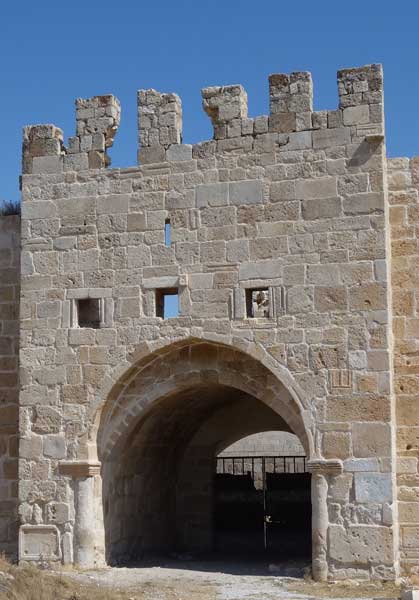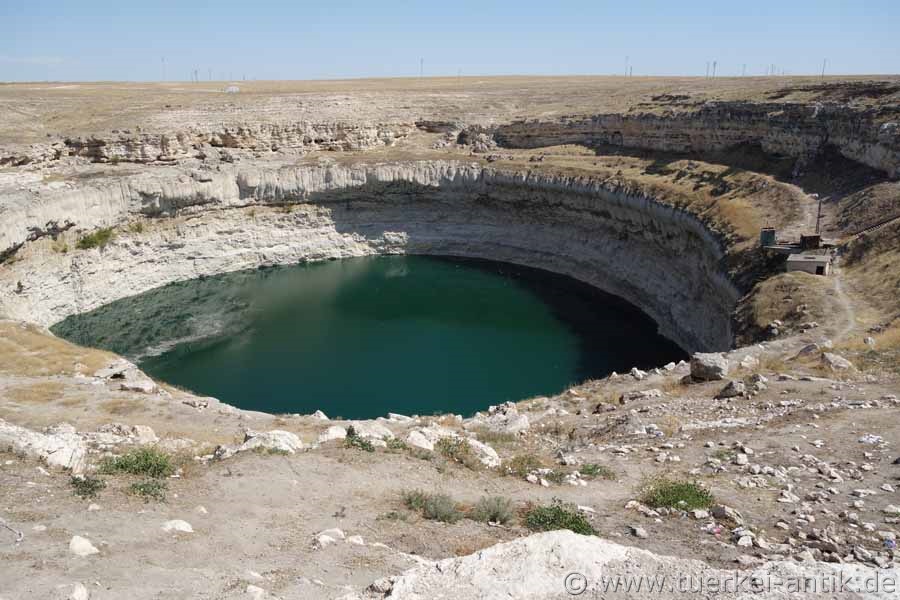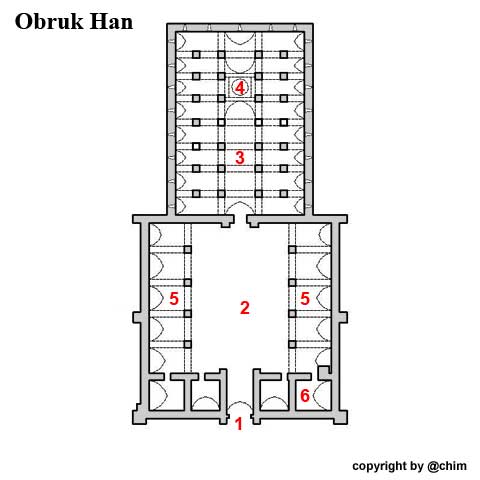 |
| Obruk Han | ||||||||||||
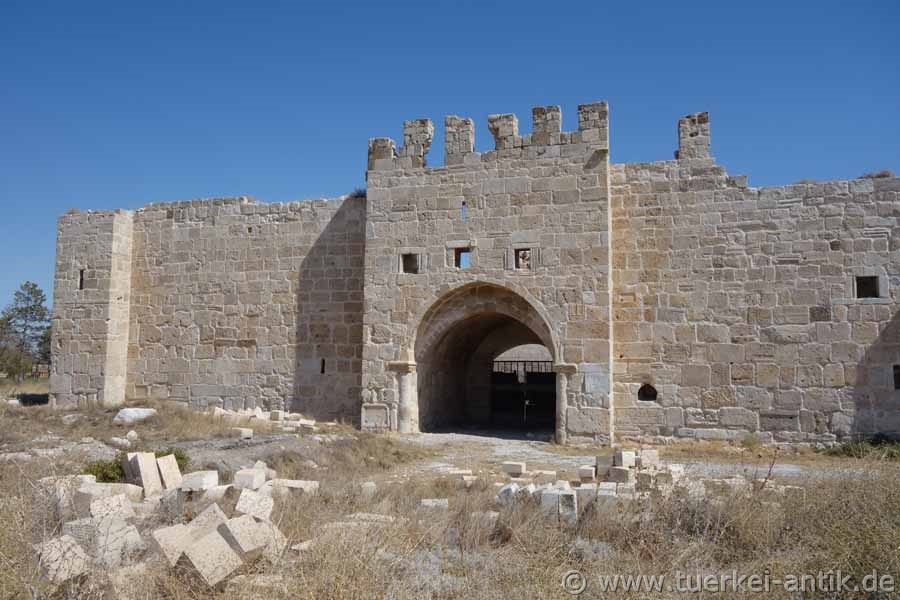 |
|
|||||||||||
| The front | ||||||||||||
|
Obruk Han is a Seljuk caravanserai northeast of Konya. It was built on the important trade route from Konya to Kayseri. The Han is named after the huge Doline (Turkish obruk) behind the Han. The original name is no longer known. |
||||||||||||
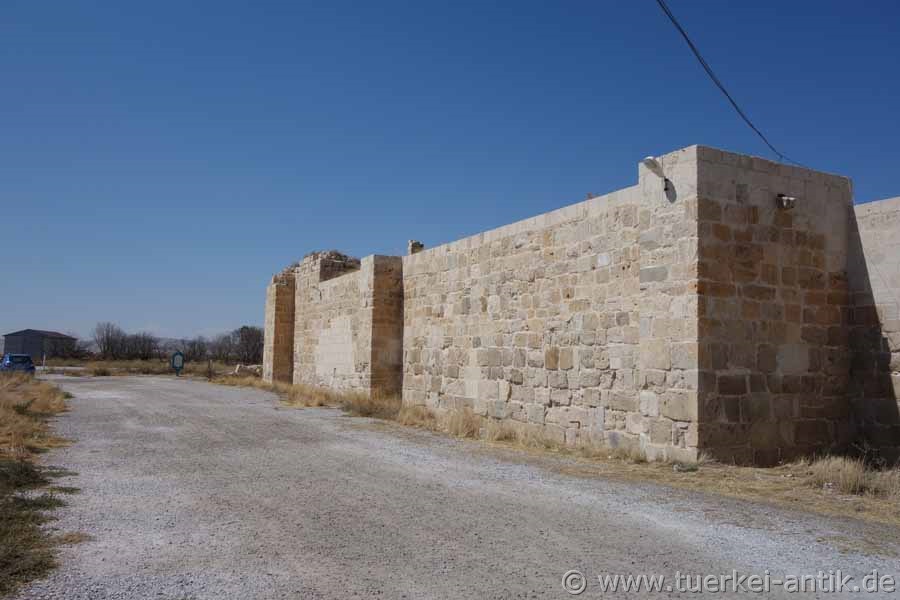 |
||||||||||||
| The south side in September 2018 | ||||||||||||
|
The Han is a typical classical Seljuk symmetrical building, whose entrance gate faces east-southeast. It consists of two interconnected buildings: a square building with sides about 35 metres long, with a courtyard twenty metres long and 15 metres wide in the centre. To the right and left of the courtyard there are five open side cells, each about ten metres wide. Of the open cells, only the arches have been preserved for the most part. The fact that the inner courtyard is larger than the enclosed area on the sides is typical of a Seljuk Han. |
||||||||||||
|
|
||||||||||||
|
Inside view in September 2018. The portal of the closed hall |
||||||||||||
|
The building was severely damaged by several earthquakes, so among other things the ceiling collapsed. In 1996, the University of Selçuk sighted the Han with the surrounding area and carried out excavations. In September 2007 an extensive renovation began, during which the outer walls and the entrance portal were repaired. The destroyed southern part of the wall was rebuilt so that the Han can only be entered through the gate. Further renovation work is planned, but has not been carried out since 2009 (status 2018). |
||||||||||||
|
|
||||||||||||
| Spoiling inside in September 2002 | ||||||||||||
|
This Han is unique in terms of its artistic equipment. With one exception, Seljuk art motifs are completely absent: in the mosque above the gate there is a Mihrāb (prayer niche), which has been severely damaged by art robbers. Instead, the appearance of the Han is characterized by Byzantine components. The main corridor of the Winter Hall was supported by fourteen Byzantine columns, ten of which are still standing. The entrance portal also stands on antique columns. |
||||||||||||
|
|
||||||||||||
|
The entrance side is conspicuous. In the middle there is an inconspicuous archway, almost five metres high, supported on both sides by Byzantine columns with an ancient architrave. The typical Seljuk Muqarna decoration is completely missing, suggesting that the Han was built in great haste. The usual inscription above the archway is also missing. The archway itself was subsequently reduced in size by about one metre. The gate area has two floors and is crowned - unusual for a Seljuk Han - by small battlements. |
||||||||||||
|
|
||||||||||||
| The Doline in September 2018 | ||||||||||||
|
|
||||||||||||
|
The Doline in September 2002 |
||||||||||||
|
|
||||||||||||
|
Immediately behind the Han there is a 216 x 173 meter oval doline. Compared to 2002 and 2018, the water level in the doline clearly shows where excessive irrigation of the ever larger agricultural areas is leading. A problem, not only in the Konya area. |
||||||||||||
|
|
||||||||||||
|
||||||||||||
| Photos: @chim, Monika P. | ||||||||||||
| Translation aid: www.DeepL.com/Translator | ||||||||||||
| Source: Wikipedia and others | ||||||||||||
|
|
||||||||||||

